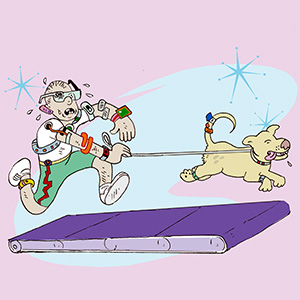This Chip has been coming for a long time it will have everything on it about you”
“IT WILL ALLOW THE GOVERNMENT TO FIND US FOR WHATEVER REASON. HEALTH CARE IS ONLY A COVER STORY.”
“How do we know we aren’t marked already? we will have to watch EVERY shot we’re given in surgery down to a filling!”
Comments on a far-right website weigh in on the widely circulated Internet meme claiming that Obamacare requires every American to be implanted with a radio frequency ID chip (RFID) with all of their medical information. Some bloggers assert that the story was reported on NBC TV, citing an old news clip.
In fact, the capability to store information in an implantable chip has been around for many years—pet ID chips are likely the most commonly known use, though there was also the poorly received idea of implanting similar chips in Alzheimer’s patients with a propensity to wander. Regardless, the chipping of the U.S. population is not implemented in Obamacare, also known as the Affordable Care Act.
But an entirely new wave of devices is moving toward the health care space. Though they hardly inspire the same near-panicked responses, these trackers are almost ubiquitous, they know everything from your weight to your sleep habits to your current heart rate—and potential tapping of their data for profit could make the implantable chip idea sound tame by comparison.
Broadly, these new technologies are referred to as “wearable devices.” They are relatively low cost and non-invasive, meaning they don’t have to be implanted, injected or otherwise put into your body in order to work. Most are bracelets, like FitBit or Jawbone or watch-type devices—of course, now the newly announced Apple Watch comes to mind. Some are worn like glasses or shoe inserts.
Many wrist-band-style fitness trackers, in particular, at a glance resemble sturdier Livestrong bracelets. Their bright colors, lithe curves and smooth surfaces, with a discreet screen or row of tiny lights, have a streamlined, athletic appeal—the opposite of the behemoth timepieces that weighed down wrists when watches that could do more than just tell time debuted in the early ’80s.
The simplicity of their physical design masks technological capabilities that could soon make them as versatile and intelligent as almost any diagnostic machine in a doctor’s office today.
Minor software improvements could turn everyday sports wearables into sophisticated monitors capable of detecting circulatory problems, heart defects, breathing disorders and more.
“They’re not able right now to say, ‘Sorry but you have cancer,’ or ‘There is something wrong with your heart here,’ but that is the Holy Grail,” says Robert Scoble, a tech industry watcher with Rackspace who last year co-authored a book with Shel Israel called The Age of Context: Mobile, Sensors, Data and the Future of Privacy.
The technical capabilities of some wearable devices today are already close to those of Class II medical monitors, but they would require government testing and certification before they could be approved for medical use.
“Getting the FDA to approve it is going to take a couple years,” Scoble says, “so it will be interesting to see who gets through that process. But it’s long and it isn’t guaranteed. Look at what the FDA did to 23andMe,” he said, referring to the startup, recently acquired by Ancestry.com, that uses DNA analysis to re-create family histories. In late 2013, the FDA ordered the company to stop selling its kits due to the potential for false results.
What makes the technology surprising is its deceptive simplicity. Today’s pulse monitors can gather and upload large amounts of data to a user’s computer and social media profile. As the technology advances and data gathering is refined, deeper levels of information emerge. This, in the near future, could be used in medical care and coverage settings.
“It is something that we as an industry are going to have to address,” says Monisha Perkash, CEO and founder of LUMO Body Tech. “We have been developing these things for some time and now find ourselves bumping up against that. Where will the data go? How will it be used?”
Currently, most wearables don’t exercise deep data collection, analysis, and sharing capabilities. Devices like the FitBit, Glassy Pro, GoQii, LinxFit, VeloComputer and RaceYourself can monitor its users’ heart rates and footfalls, temperature, speed and stress, but the information is presented in a simplified form that is just adequate for everyday sports use.
Lori G. purchased a FitBit Flex in March of this year to aid in a weight loss regime….




